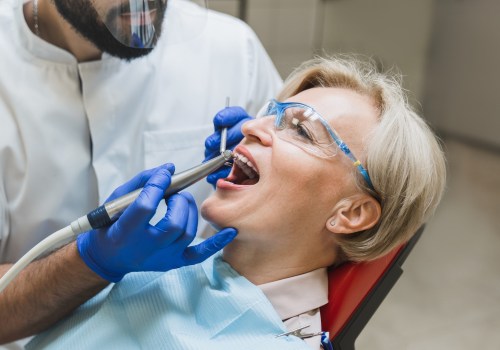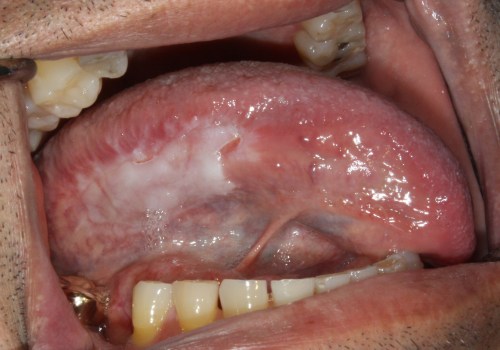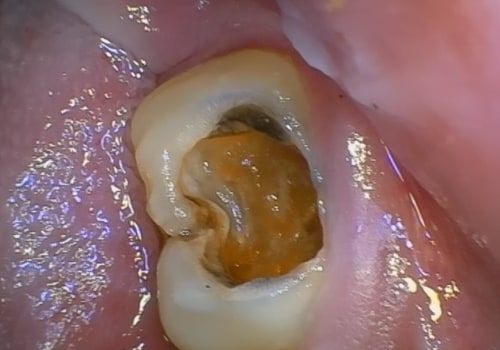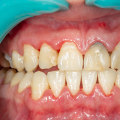Having dental insurance is a great way to keep your teeth and gums healthy. But what about check-ups? Do you know what kind of coverage you have for regular check-ups? Understanding the details of your dental insurance coverage for check-ups can help you save money and make sure you get the care you need. In this article, we'll cover everything you need to know about dental insurance coverage for check-ups. We'll look at what is typically covered in a typical plan, how to find out what is covered in your particular plan, and how to make sure you get the most out of your coverage.
Dental insurance coverage for check-ups
is an important part of maintaining your oral health. Regular dental check-ups can help detect any potential problems and prevent them from becoming more serious.Fortunately, there are a variety of dental insurance plans available that can help offset the costs of these check-ups. In this article, we’ll explore the different types of dental insurance coverage for check-ups and how it can help you save money and improve your oral health. The most common types of dental insurance coverage for check-ups are Preferred Provider Organizations (PPOs), Health Maintenance Organizations (HMOs), and Dental Health Maintenance Organizations (DHMOs). PPOs allow you to use any dentist, but they often have higher co-pays and deductibles than HMOs. HMOs require you to select a primary care dentist within their network and offer lower co-pays and deductibles than PPOs.
DHMOs typically have lower premiums than other types of dental insurance, but you must use a dentist that is part of their network. All types of dental insurance plans usually have an annual maximum that limits the amount they will cover in a year. It’s important to understand the advantages and disadvantages of each type of dental insurance coverage for check-ups before making a decision. You should also consider other features such as co-pays, deductibles, annual maximums, and other important features when selecting a plan. Additionally, it’s important to remember that preventive care like regular check-ups is essential for maintaining your oral health and can help you avoid costly dental procedures in the future. If you already have a dental insurance plan, there are steps you can take to maximize your coverage for check-ups.
Make sure to ask your dentist for a detailed list of services that are covered by your plan so that you know exactly what is included. Most plans also offer discounts for preventive care such as X-rays, cleanings, and exams. Additionally, it’s a good idea to stay up-to-date on any changes to your plan so that you’re not caught off guard by unexpected fees or reduced coverage. For those who don’t have access to traditional dental insurance plans, there are still ways to find affordable coverage for check-ups. Some employers offer discount plans that provide access to reduced rates at participating dentists.
Additionally, there are online services that help you compare dental plans and prices from different providers. Finally, if you need additional care beyond what is covered by your insurance plan, it’s important to discuss payment options with your dentist before receiving treatment.
Dental insurance coverage for check-ups
is an important part of maintaining good oral health and preventing more serious problems down the road. Different types of dental insurance plans offer different advantages and disadvantages, so it’s important to understand your options before selecting a plan. There are also steps you can take to maximize your coverage and tips for finding affordable coverage for those who don’t have access to traditional plans.Knowing how to get the most out of your dental insurance coverage can help you save money and improve your oral health.
Additional Care Beyond Insurance
Your dental insurance plan may not cover every aspect of your check-ups, so it is important to understand what additional care may be necessary. If you need additional care beyond what is covered by your insurance plan, there are a few options available. First, you can discuss payment plans with your dentist. Many dentists are willing to work with their patients to create a payment plan that fits their budget.Additionally, you may be able to use a health savings account (HSA) to help offset the cost of additional care. HSAs are tax-advantaged accounts that allow you to set aside pre-tax dollars for medical expenses. Finally, you may consider purchasing a supplemental dental insurance policy. These policies typically cover services not included in traditional plans, such as orthodontics and implants.
Be sure to read the policy carefully to understand what is and isn’t covered. It is important to understand the limitations of your dental insurance coverage for check-ups so that you can be prepared for any additional care that may be needed. By researching all of your options and discussing payment plans with your dentist, you can ensure that you receive the care you need without breaking the bank.
Importance of Preventive Care
Preventive care is an important part of maintaining your oral health, and regular check-ups are a key component of that. Regular check-ups help identify and address any issues before they become more serious, helping you save money on dental bills in the long run.Additionally, preventive care helps maintain healthy teeth and gums, which can help improve overall health and well-being. Regular check-ups can also be used to detect early signs of tooth decay, periodontal disease, cavities, and other oral health problems. By catching these issues early, it is often possible to treat them more effectively and with fewer invasive procedures. Additionally, preventive care can help identify any potential lifestyle changes that may be necessary to maintain good oral health. By having regular check-ups, you can also make sure that your teeth and gums are in the best condition possible, making it easier to avoid costly or painful treatments down the road. With preventive care, dentists can provide advice on proper brushing and flossing techniques, diet and nutrition, and other tips to ensure that your oral health is in top shape. Finally, regular check-ups are important for identifying signs of any serious oral health conditions that may require additional treatment.
Your dentist can use these check-ups to monitor any changes in your mouth and provide advice on how best to treat any problems.
Types of Dental Insurance Coverage
PPOs – Preferred Provider Organizations are the most common type of dental insurance. A PPO plan allows you to choose any dentist, but dentists within the network will offer discounts on services that are covered by the plan. The biggest advantage of a PPO is that you have more flexibility and more choices when selecting your dentist. However, you may be required to pay a portion of the cost of treatment out-of-pocket, even for services that are covered by the plan.HMOs – Health Maintenance Organizations are similar to PPOs, but they offer more cost savings in exchange for less flexibility. With an HMO, you must choose a primary care dentist from within the network, and this dentist will refer you to specialists as needed. You will also need to get a referral in order to be seen by any dentist outside of the network. The biggest advantage of an HMO is that you’ll pay less out-of-pocket costs for services that are covered by the plan.
DHMOs – Dental Health Maintenance Organizations are similar to HMOs, but they offer more cost savings in exchange for even less flexibility. With a DHMO, you must choose a primary care dentist from within the network, and this dentist will refer you to specialists as needed. You must also get a referral in order to be seen by any dentist outside of the network. The biggest advantage of a DHMO is that you’ll pay very little out-of-pocket costs for services that are covered by the plan.
Maximizing Your Coverage
Making the most out of your dental insurance coverage for check-ups requires a bit of research and planning. There are several steps you can take to get the most out of your plan.1.Understand Your Plan:
The first step is to carefully read and understand the details of your plan. This includes knowing the annual or lifetime maximums, co-payment requirements, deductible amounts, and any other restrictions or limitations.Knowing the details of your plan will help you make the most of it.
2.Choose an In-Network Dentist:
Most dental insurance plans will require you to use a dentist that is part of their network. In-network dentists have agreed to provide services at discounted rates. Make sure you choose an in-network dentist to take advantage of these discounted rates.3.Take Advantage of Preventative Care:
Most dental insurance plans will cover preventative care such as routine check-ups, cleanings, and x-rays. Taking advantage of preventative care not only helps keep your oral health in top shape but also helps keep costs down.4.Take Advantage of Discounts:
Many dental insurance plans offer discounts for services such as sealants, fluoride treatments, and even cosmetic procedures.Be sure to ask your dentist if they offer any discounts.
5.Consider Other Options:
If your dental insurance plan does not cover the services you need, there are other options available. There are discount plans that offer reduced rates on dental services, and some employers offer supplemental plans to help cover additional costs. By understanding your plan and taking advantage of preventative care, discounts, and other options, you can maximize your dental insurance coverage for check-ups and save money on your oral health care costs.Affordable Dental Coverage Options
For many people, regular check-ups are essential for maintaining their oral health, but they can be expensive. Fortunately, there are a variety of dental insurance coverage plans available that can help offset the costs. In this article, we’ll explore the different types of dental insurance coverage for check-ups and how it can help you save money and improve your oral health. For those who don’t have access to traditional dental insurance plans, there are still plenty of affordable options available.Here are some tips for finding affordable dental coverage:1.Look for Discount Dental PlansDiscount dental plans are an affordable alternative to traditional dental insurance plans. These plans offer discounts on a variety of services, including check-ups, cleanings, fillings, and other procedures. Many discount dental plans also offer additional benefits such as vision care and prescription drug discounts.
2.Take Advantage of Employee Benefits
If you are employed, it’s worth checking to see if your employer offers any type of dental insurance coverage. Many employers offer dental insurance as part of their employee benefits package, so this could be a great way to save money on your check-ups.3.Consider Low-Cost or Sliding Scale Clinics
There are also a number of low-cost or sliding scale clinics available in many areas.These clinics typically offer discounted rates for check-ups and other services, making them an ideal option for those who need dental care but don’t have access to traditional insurance plans.
4.Look for Government Assistance Programs
The government also provides assistance programs for those who need help with dental care costs. These programs offer reduced rates for check-ups and other services. It’s worth checking to see if you qualify for any type of government assistance program.5.Take Advantage of Online Resources
Finally, there are a number of online resources available that can help you find affordable dental coverage. Websites such as DentalPlans.com and eHealthInsurance.com allow you to compare different plans and find one that fits your needs and budget. In conclusion, regular check-ups are essential for maintaining optimal oral health.Different types of dental insurance coverage vary in terms of what they cover and how much they cost. With the right dental insurance plan, you can maximize your coverage and save money on preventive care. Additionally, there are also affordable dental coverage options available for those who cannot afford traditional dental insurance plans. Beyond insurance coverage, there are also other options available such as discount dental plans and dental savings accounts. Ultimately, it’s important to do your research and understand the different types of dental insurance coverage plans available so that you can make an informed decision about which plan is best for your needs.
For more information about dental insurance coverage for check-ups, please visit our resources page.






